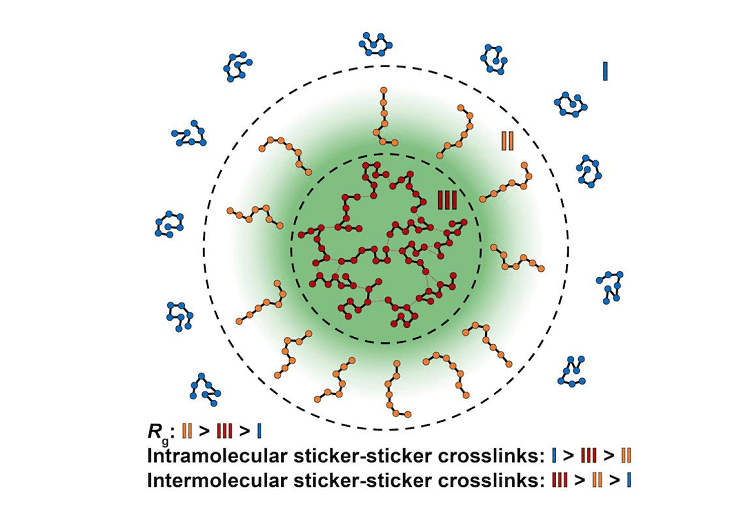Before mixing an oil-and-vinegar-based salad dressing, the individual drops of vinegar are easily seen suspended in the oil, each with a perfectly circular boundary that delineates the two liquids. In the same way, our cells contain condensed bundles of proteins and nucleic acids called condensates delineated by clear boundaries. The boundaries are known as interfaces and given that condensates talk to one another through their interfaces, the structural features of the interface are of significant interest. New research has uncovered unique features of interfaces of model condensates. The findings are relevant because the features interfaces are relevant to the seeding of fibrillar conformations that are associated with neurodegenerative diseases such as amyotrophic lateral sclerosis (ALS).
A team of researchers led by Rohit Pappu, PhD, the Gene K. Beare Distinguished Professor and director of the Center for Biomolecular Condensates in the McKelvey School of Engineering at Washington University in St. Louis, recently focused on defining the molecular scale features of interfaces of condensates. The research, driven by Mina Farag, an MD/PhD student in the Pappu lab and first author of the paper, were generated in collaboration with Tanja Mittag and her lab at St. Jude Children’s Research Hospital. The results were published in Nature Communications Dec. 13, 2022.
A surprising finding was that interfaces, which might seem to be uniform and infinitesimally thin from the vinegar in oil picture, are thick and defined by specific shape and size preferences at the molecular level, Pappu said. Within condensates, the molecules are organized into a small-world structure that we readily recognize from the hub-and-spoke network structure of airports for commercial airlines.
“There is a particular type of connectivity that defines the way these molecules are organized, and that is because they have viscoelastic properties that makes them either elastic on short timescales and viscous on long timescales, much like putty,” Pappu said.
